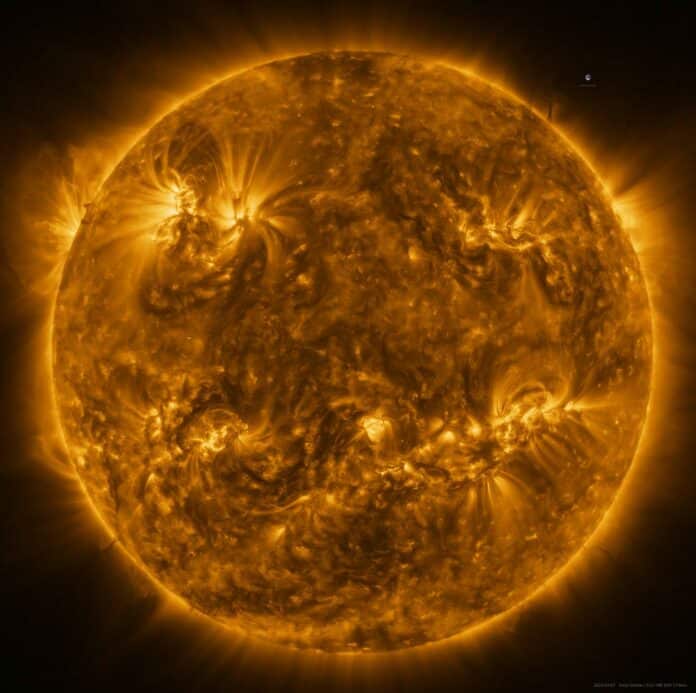On March 7, 2023, ESA’s solar orbiter captured the most detailed image of the Sun. The images, a mosaic of 25 individual images, were arrested when the Solar Orbiter was roughly 75 million kilometers away, halfway between our world and its parent star.
These images show the full Sun in unprecedented detail. One picture, captured by the Extreme Ultraviolet Imager (EUI), is the best and most precise image ever taken of the Sun’s entire surface and outer layer called the corona.
Another picture, taken by the Spectral Imaging of the Coronal Environment (SPICE) tool, is the first full image of the Sun like this in 50 years. It’s the best one taken at the Lyman-beta wavelength of ultraviolet light emitted by hydrogen gas.
The unique pictures of the Sun were taken one after another and put together to make a complete image. It took over four hours to capture the whole picture because each tiny part was called a tile and needed about 10 minutes to be photographed. The spacecraft had to move and point to different segments of the Sun to get all the tiles.
The final image is significant, with more than 83 million tiny dots called pixels. It’s arranged in a grid of 9148 x 9112 pixels.
The Extreme Ultraviolet Imager (EUI) camera captured images in the extreme ultraviolet region of the electromagnetic spectrum at a wavelength of 17 nanometers. The images show the Sun’s outer layer, called the corona, which is extremely hot, about a million degrees Celsius.
If you look at the picture, you can see dark lines sticking out from the Sun at the 2 o’clock and 8 o’clock positions (like the numbers on a clock). These dark lines are called ‘prominences.’ Sometimes, these prominences can burst out, throwing a lot of gas from the Sun’s outer layer into space. This can cause storms in space, known as ‘space weather.’ Just for scale, there’s an image of Earth near the 2 o’clock position in the image.
In addition to EUI, the SPICE instrument was also recording data during the crossing. The Spectral Imaging of the Coronal Environment (SPICE) pictures show different colors representing gases at different temperatures. In these images:
- Purple represents hydrogen gas at a temperature of 10,000 degrees Celsius.
- Blue corresponds to carbon at a very high temperature of 32,000 degrees Celsius.
- Green shows oxygen at an even higher temperature of 320,000 degrees Celsius.
- Yellow indicates neon, which is super hot at 630,000 degrees Celsius.
These color variations help scientists trace powerful eruptions on the Sun, starting from the outer layer (corona) and going down to the lower layers. Scientists are especially interested in understanding why the temperature increases as you move through the different layers of the Sun’s atmosphere. It’s a bit of a mystery, and these detailed images help researchers study and figure out what’s happening.
